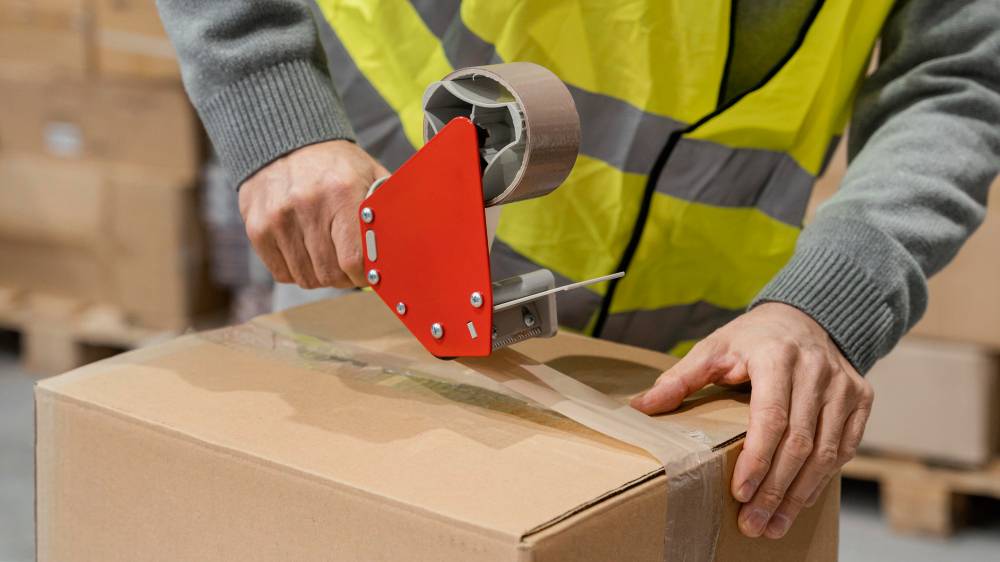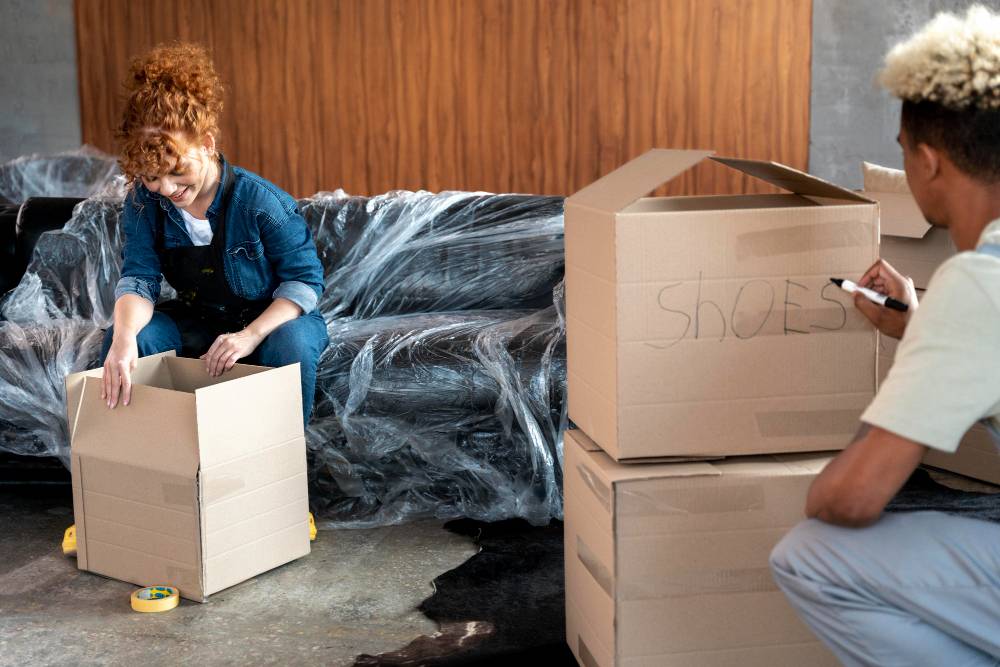Moving to a new home or office can be an exciting adventure, but let’s be real—it can also be incredibly stressful. From packing up your life to coordinating logistics, the process can feel overwhelming.
However, with proper planning and organization, you can make your move smooth and hassle-free. Whether you’re relocating across town or to another state, implementing the right strategies will help reduce stress and ensure a seamless transition.
The key to a successful move is breaking down the process into manageable steps. By planning, staying organized, and following proven moving techniques, you can avoid common pitfalls that make moving days chaotic.
Instead of dreading the process, you’ll be able to focus on the excitement of settling into your new space.
To help you navigate the moving process with ease, we’ve compiled the top 10 essential tips for a stress-free move.
These practical suggestions will guide you from the early planning stages to the moment you unpack your last box, ensuring a smooth and efficient moving experience.
1. Plan and Stay Organized
The key to a stress-free move is early planning. Start by creating a moving checklist that outlines every step of the process, from decluttering to unpacking. Break tasks down into manageable chunks and set deadlines for each. Having a clear timeline can help prevent last-minute scrambling and ensure nothing gets overlooked.
Another essential part of planning is setting a moving budget. Costs can add up quickly, from hiring movers to purchasing packing supplies.
Determine how much you’re willing to spend and look for ways to cut costs, such as getting free boxes from local stores or renting a moving truck instead of hiring a full-service company.
Finally, research the logistics of your move. If you’re moving to a new city, learn about your new neighborhood, including the best routes and parking restrictions.
If you’re relocating to an apartment or condo, check with the building management for any moving rules or elevator reservations you may need.
2. Declutter Before You Pack
Why move items you no longer need? Before packing, go through your belongings and sort them into categories: keep, donate, sell, or discard.
Not only will this lighten your load, but it will also save you time and money on packing materials and moving costs. The fewer items you take with you, the easier your move will be.
Decluttering also allows you to reassess your possessions. Are you holding onto items out of nostalgia or guilt?
If you haven’t used something in over a year, chances are you won’t miss it. Consider donating gently used items to local charities or selling valuable but unused belongings online.
Another helpful approach is the “one-year rule.” If you haven’t used an item in the past year, it’s time to let it go. This is particularly useful for clothing, kitchen gadgets, and decorative items that tend to accumulate over time.
3. Gather High-Quality Packing Supplies
Invest in sturdy boxes, packing tape, bubble wrap, and labels. The last thing you want is for your belongings to be damaged during transit.
You can often find free moving boxes at local stores, but make sure they’re in good condition. Weak or damaged boxes can cause more harm than good.
When purchasing packing supplies, consider specialty boxes for fragile items such as dishes, glasses, and electronics.
Wardrobe boxes, which allow you to transfer clothing directly from the closet, can also save time and keep your clothes wrinkle-free.
In addition to boxes, don’t forget essential packing tools such as a box cutter, zip ties, packing paper, and permanent markers for labeling. Keeping these items within reach will make the packing process smoother and more efficient.

4. Pack Smart and Label Everything
Pack room by room, starting with the items you use the least. Label each box clearly with its contents and the room it belongs in.
Consider using color-coded labels for even easier identification. This simple step can save you a lot of frustration when unpacking in your new home.
When packing fragile items, use extra padding to prevent breakage. Wrap dishes and glassware individually with bubble wrap or newspaper, and place them in boxes with cushioning materials like packing peanuts or towels. Avoid overloading boxes to prevent them from breaking or becoming too heavy to lift.
For electronics and furniture, take photos before disassembling them. This will make reassembly much easier. Store screws and small parts in labeled bags and tape them to the corresponding items so they don’t get lost in the shuffle.
5. Hire Professional Movers
If your budget allows, hiring professional movers can significantly reduce stress. Research moving companies read reviews, and get quotes in advance.
Make sure they are licensed and insured to protect your belongings. A reputable moving company can handle the heavy lifting and transportation, allowing you to focus on other important aspects of your move.
When choosing a moving company, consider factors such as experience, pricing, and services offered. Some companies provide packing and unpacking services, which can be a great option if you’re short on time.
Be sure to get everything in writing, including cost estimates and service agreements, to avoid unexpected charges.
If hiring movers isn’t an option, consider enlisting the help of friends and family. Offer incentives like food and drinks to make the experience more enjoyable for everyone.
6. Notify Important Parties About Your Move
Change your address with the post office, banks, insurance providers, and other important institutions. Inform friends and family about your new address and update your subscriptions. This step ensures that your mail and important documents reach you without any delays.
If you receive regular deliveries, such as meal kits or prescription medications, update your shipping address in advance to avoid disruptions. Also, inform your employer and update your contact information with any professional organizations you belong to.
For business moves, notify clients, vendors, and service providers well in advance. Updating your website and social media pages with your new address can also help prevent confusion.
7. Prepare for Moving Day
Moving day can be chaotic, so having a clear plan will help things run smoothly. Ensure all boxes are packed, labeled, and ready to go before the movers arrive. Double-check that fragile items are securely packed and that pathways are clear for easy access.
Dress comfortably and keep important documents, medications, and valuables with you instead of loading them onto the moving truck. Have cash on hand for unexpected expenses, and keep snacks and water available to stay energized throughout the day.
Finally, conduct a final walkthrough of your old home to make sure nothing is left behind. Check all closets, cabinets, and storage spaces to avoid leaving important items behind.
8. Take Care of Yourself During the Move
Moving is physically and mentally demanding, so don’t forget to take care of yourself. Get plenty of rest the night before and stay hydrated throughout the day.
If you feel overwhelmed, take short breaks to clear your mind. Moving is a marathon, not a sprint, and pacing yourself will help keep stress levels in check.
Accept help from friends, family, or neighbors if they offer. Having extra hands can make a huge difference and make the process feel less overwhelming.

9. Unpack Systematically
Once you arrive at your new home, resist the urge to unpack everything at once. Start with essentials and gradually move on to other rooms.
Set up your bedroom and kitchen first, as these are the most used spaces. Having a functional sleeping area and a place to prepare meals will help you feel settled more quickly.
Stick to an unpacking schedule and avoid procrastination. The sooner you get everything organized, the sooner you can start enjoying your new space.
10. Take Time to Settle In and Enjoy Your New Home
Moving doesn’t end when you unpack the last box. Take time to explore your new neighborhood, introduce yourself to neighbors, and personalize your space.
If you moved to a new city, check out local attractions, restaurants, and parks. Making an effort to get familiar with your surroundings will help you feel more at home.
Most importantly, celebrate your accomplishment! Moving is a big step, and once you’re settled in, you can truly appreciate the fresh start your new home offers.
Conclusion
Moving can be a stressful experience, but with careful planning and organization, you can make it much easier. By following these top 10 tips, you’ll be able to navigate the process smoothly and minimize the hassle.
Remember, the key to a successful move is preparation, efficiency, and staying calm under pressure. Whether you’re hiring professional movers or handling everything yourself, taking small steps to stay organized will make a big difference.
Once you’ve settled into your new home, take time to relax and enjoy the fresh start. Every move is a new chapter, and with the right approach, you can make it a positive and exciting transition.



